
The Islamic calendar, Muslim calendar or Hijri calendar (AH)[1][2] is a lunar calendar consisting of 12 months in a year of 354 or 355 days.

It is used to date events in many Muslim countries (concurrently with the Gregorian calendar), and used by Muslims everywhere to determine the proper days on which to observe the annual fast (see Ramadan), to attend Hajj, and to celebrate other Islamic holidays and festivals.

The first year was the Islamic year beginning in AD 622 during which the emigration of the Islamic Prophet Muhammad from Mecca to Medina, known as the Hijra, occurred. Each numbered year is designated either H for Hijra or AH for the Latin anno Hegirae (in the year of the Hijra),[3] hence, Muslims typically call their calendar the Hijri calendar.

The current Islamic year is 1434 AH. In the Gregorian calendar 1434 AH runs from approximately 14 November 2012 (evening) to 4 November 2013 (evening).
Months
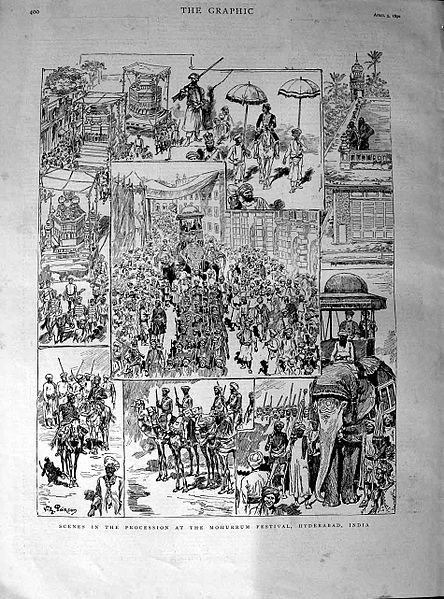
Four of the twelve Hijri months are considered sacred, although there is disagreement over the designated months, such as between proponents for the sequences {7,11,12,1} vs. {12,1,2,3}.[4] The twelve Hijri months are named as follows in Arabic:[5]
- Muḥarram — المحرّم, "forbidden" — so called because battle was set aside (haram) during this month. Muharram includes the Day of Ashura.
- Ṣafar — صفر, "void" — supposedly named because pagan Arabs looted during this month and left the houses empty.
- Rabīʿ I (Rabīʿ al-Awwal) — ربيع الأوّل, "the first spring".
- Rabīʿ II (Rabīʿ ath-Thānī or Rabīʿ al-Ākhir) — ربيع الثاني or ربيع الآخر, "the second (or last) spring".
- Jumādā I (Jumādā al-Ūlā) — جمادى الأولى, "the first month of parched land". Often considered the pre-Islamic "summer".
- Jumādā II (Jumādā ath-Thāniya or Jumādā al-Ākhira) — جمادى الثانية or جمادى الآخرة, "the second (or last) month of parched land".
- Rajab — رجب, "respect" or "honor". This is another sacred month in which fighting was traditionally forbidden.
- Shaʿbān — شعبان, "scattered", marking the time of year when Arab tribes dispersed to find water.
- Ramaḍān — رمضان, "scorched". Ramadan is the most venerated month of the Hijri calendar during which Muslims have to fast from dawn till sunset and honoring the poor people with something a brother or a sister needs within his or her society.
- Shawwāl — شوّال, "raised", as she-camels normally would be in calf at this time of year.
- Dhū al-Qaʿda — ذو القعدة, "the one of truce". Dhu al-Qa'da was another month during which war was banned.
- Dhū al-Ḥijja — ذو الحجّة, "the one of pilgrimage", referring to the annual Muslim pilgrimage to Mecca, the Hajj.
Days of the week
In Arabic, as in Hebrew, the "first day" of the week corresponds with Sunday of the planetary week. The Islamic and Jewish weekdays begin at sunset, whereas the medieval Christian and planetary weekdays begin at the following midnight.[6] The Christian liturgical day, however, kept in monasteries, begins with vespers (see vesper), which is evening, in line with the other Abrahamic traditions. Muslims gather for worship at a mosque at noon on "gathering day" (Yaum al-Jumu‘ah, yawm يوم means ‘day’) which corresponds with Friday. Thus "gathering day" is often regarded as the weekly day of rest. This is frequently made official, with many Muslim countries adopting Friday and Saturday (e.g. Egypt) or Thursday and Friday (e.g. Saudi Arabia) as official weekends, during which offices are closed; other countries (e.g. Iran) choose to make Friday alone a day of rest, and few others (e.g. Turkey) adopted the Western Saturday-Sunday weekend while making Friday a working day with a long midday break to allow time off for worship.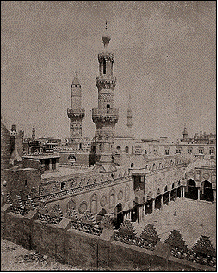
Pre-Islamic calendar
Inscriptions of the ancient South Arabian calendars reveal the use of a number of local calendars. At least some of these calendars followed the lunisolar system. For Central Arabia, especially Mecca, there is a lack of epigraphical evidence but details are found in the writings of Muslim authors of the Abbasid era. Both al-Biruni and al-Mas'udi suggest that the Ancient Arabs used the same month names as the Muslims, though they also record other month names used by the pagan Arabs.[7]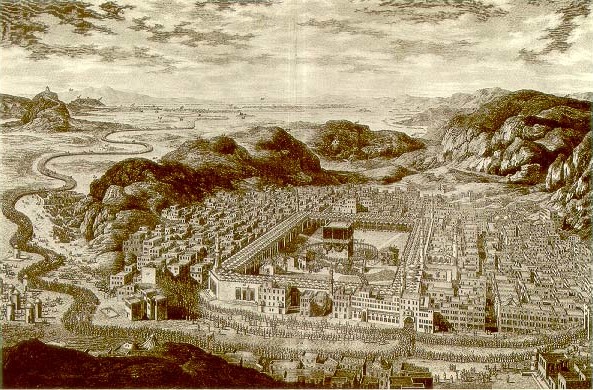
The Islamic tradition is unanimous in stating that Arabs of Tihamah, Hejaz, and Najd distinguished between two types of months, permitted (ḥalāl) and forbidden (ḥarām) months. The forbidden months were four months during which fighting is forbidden, listed as Rajab and the three months around the pilgrimage season, Dhū al-Qiʿda, Dhū al-Ḥijja, and Muḥarram. Information about the forbidden months is also found in the writings of Procopius, where he describes an armistice with the Eastern Arabs of the Lakhmid al-Mundhir which happened in the summer of 541 AD. However, Muslim historians do not link these months to a particular season. The Qur'an links the four forbidden months with Nasīʾ, a word that literally means "postponement".[7] According to Muslim tradition, the decision of postponement was administered by the tribe of Kinanah,[8] by a man known as the al-Qalammas of Kinanah and his descendants (pl. qalāmisa).[9]
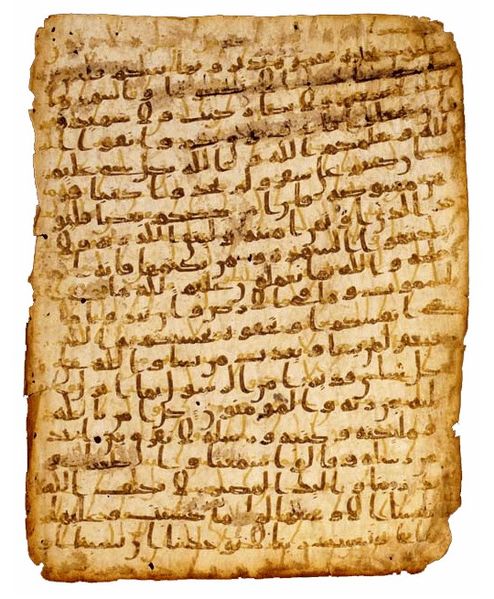
Different interpretations of the concept of Nasīʾ have been proposed.[10] Some scholars, both Muslim[11][12] and Western,[7][8] maintain that the pre-Islamic calendar used in Central Arabia was a purely lunar calendar similar to the modern Islamic calendar. According to this view, Nasīʾ is related to the Pagan practices of the Meccan Arabs, where they would alter the distribution of the forbidden months within a given year without implying a calendar manipulation. This interpretation is supported by Arab historians and lexicographers, like Ibn Hisham, Ibn Manzur, and the corpus of Qur'anic exegesis.[13] It is also corroborated by an early Sabaic inscription, where a religious ritual was "postponed" (ns'ʾw) due to war. According to the context of this inscription, the verb ns'ʾ has nothing to do with intercalation, but only with moving religious events within the calendar itself. The similarity between the religious concept of this ancient inscription and the Qur'an suggests that non-calendering postponement is also the Qur'anic meaning of Nasīʾ.[7] Thus the Encyclopaedia of Islam concludes that the "The Arabic system of [Nasīʾ] can only have been intended to move the Hajj and the fairs associated with it in the vicinity of Mecca to a suitable season of the year. It was not intended to establish a fixed calendar to be generally observed."[14]

Others concur that it was originally a lunar calendar, but suggest that about 200 years before the Hijra it was transformed into a lunisolar calendar containing an intercalary month added from time to time to keep the pilgrimage within the season of the year when merchandise was most abundant. This interpretation was first proposed by the medieval Muslim astrologer and astronomer Abu Ma'shar al-Balkhi, and later by al-Biruni,[9][15] al-Mas'udi, and some Western scholars.[16] This interpretation considers Nasīʾ to be a synonym to the Arabic word for "intercalation" (kabīsa). It also suggests that every second or third year the beginning of the year was postponed by one month. The intercalation doubled the month of the pilgrimage, that is, the month of the pilgrimage and the following month were given the same name, postponing the names and the sanctity of all subsequent months in the year by one. The first intercalation doubled the first month Muharram, then three years later the second month Safar was doubled, continuing until the intercalation had passed through all twelve months of the year and returned to Muharram, when it was repeated. The Arabs, according to one explanation mentioned by Abu Ma'shar, learned of this type of intercalation from the Jews.[8][9][15]
Prohibiting Nasīʾ
In the tenth year of the Hijra, as documented in the Qur'an (sura 9:36–37), God revealed the "prohibition of the Nasīʾ".

This prohibition was mentioned by Muhammad during the farewell sermon which was delivered on 9 Dhu al-Hijja 10 AH (Julian date Friday 6 March, AD 632) on Mount Arafat during the farewell pilgrimage to Mecca.

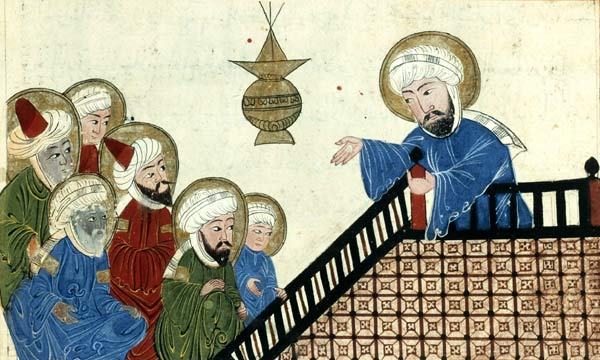
The first ten years of the Hijra were not numbered, but were named after events in the life of Muhammad according to Abū Rayḥān al-Bīrūnī:[20]
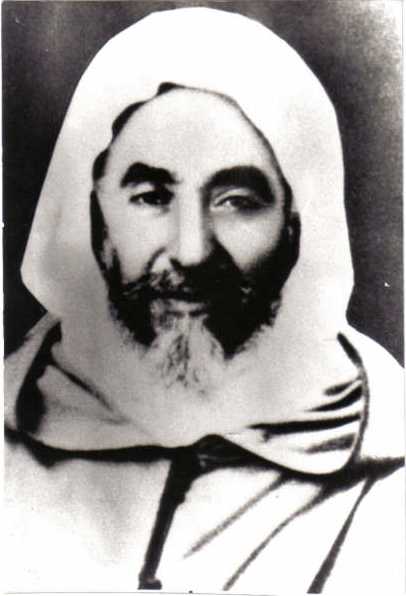
In AD 638 (17 AH), Abu Musa Ashaari, one of the officials of the Caliph Umar in Basrah, complained about the absence of any years on the correspondence he received from Umar, making it difficult for him to determine which instructions were most recent. This report convinced Umar of the need to introduce an era for Muslims. After debating the issue with his counsellors, he decided that the first year should include the date of Muhammad's arrival at Medina (known as Yathrib, before Muhammad's arrival). Uthman ibn Affan then suggested that the months begin with Muharram, in line with the established custom of the Arabs at that time.[21] The years of the Islamic calendar thus began with the month of Muharram in the year of Muhammad's arrival at the city of Medina, even though the actual emigration took place in Safar and Rabi' I.[3] Because of the Hijra, the calendar was named the Hijra calendar.

The first day of the first month of the Islamic calendar (1 Muharram 1 AH) was Friday, 16 July AD 622, the equivalent civil tabular date (same daylight period) in the Julian calendar.[22][23] The Islamic day began at the preceding sunset on the evening of 15 July. This Julian date (16 July) was determined by medieval Muslim astronomers by projecting back in time their own tabular Islamic calendar, which had alternating 30- and 29-day months in each lunar year plus eleven leap days every 30 years. For example, al-Biruni mentioned this Julian date in the year AD 1000.[24] Although not used by either medieval Muslim astronomers or modern scholars to determine the Islamic epoch, the thin crescent moon would have also first become visible (assuming clouds did not obscure it) shortly after the preceding sunset on the evening of 15 July, 1.5 days after the associated dark moon (astronomical new moon) on the morning of 14 July.[25]

Though Cook and Crone in Hagarism: The Making of the Islamic World cite a coin from 17 AH, the first surviving attested use of a Hijri calendar date alongside a date in another calendar (Coptic) is on a papyrus from Egypt in 22 AH, PERF 558.
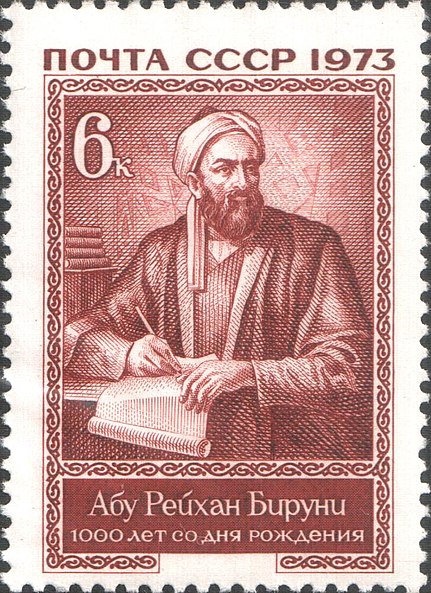
The Islamic calendar is not to be confused with a lunar calendar that is based on astronomical calculations. The latter is based on a year of 12 months adding up to 354.37 days. Each lunar month begins at the time of the monthly "conjunction", when the Moon is located on a straight line between the Earth and the Sun. The month is defined as the average duration of a rotation of the Moon around the Earth (29.53 days). By convention, months of 30 days and 29 days succeed each other, adding up over two successive months to 59 full days. This leaves only a small monthly variation of 44 minutes to account for, which adds up to a total of 24 hours (i.e. the equivalent of one full day) in 2.73 years. To settle accounts, it is sufficient to add one day every three years to the lunar calendar, in the same way that one adds one day to the Gregorian calendar, every four years.[26] The technical details of the adjustment are described in Tabular Islamic calendar.
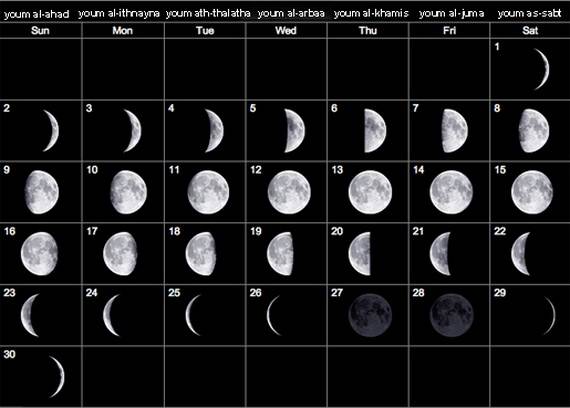
The Islamic calendar, however, is based on a different set of conventions.[27] Each month has either 29 or 30 days, but usually in no discernible order. Traditionally, the first day of each month is the day (beginning at sunset) of the first sighting of the hilal (crescent moon) shortly after sunset. If the hilal is not observed immediately after the 29th day of a month (either because clouds block its view or because the western sky is still too bright when the moon sets), then the day that begins at that sunset is the 30th. Such a sighting has to be made by one or more trustworthy men testifying before a committee of Muslim leaders. Determining the most likely day that the hilal could be observed was a motivation for Muslim interest in astronomy, which put Islam in the forefront of that science for many centuries.
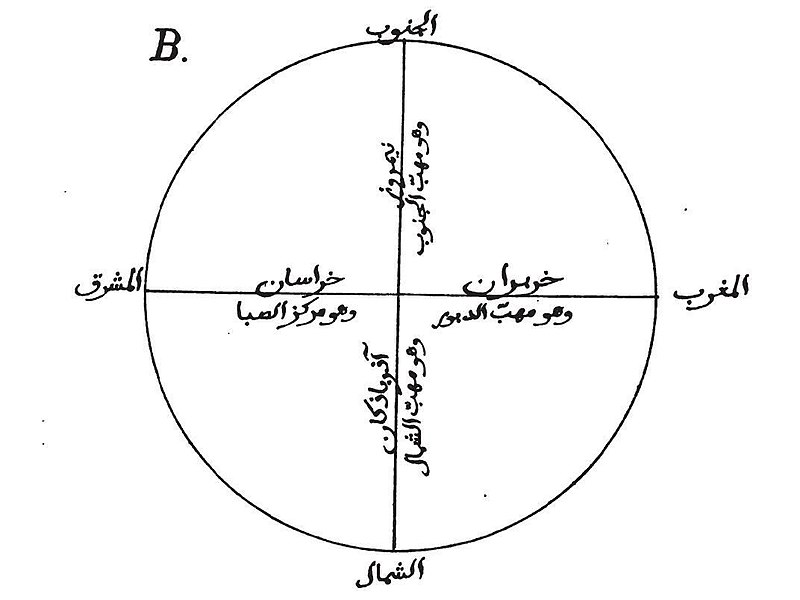
This traditional practice is still followed in the overwhelming majority of Muslim countries. Each Islamic state proceeds with its own monthly observation of the new moon (or, failing that, awaits the completion of 30 days) before declaring the beginning of a new month on its territory. But, the lunar crescent becomes visible only some 17 hours after the conjunction, and only subject to the existence of a number of favourable conditions relative to weather, time, geographic location, as well as various astronomical parameters.[28]

Given the fact that the moon sets progressively later than the sun as one goes west, with a corresponding increase in its "age" since conjunction, Western Muslim countries may, under favorable conditions, observe the new moon one day earlier than eastern Muslim countries. Due to the interplay of all these factors, the beginning of each month differs from one Muslim country to another, during the 48 h period following the conjunction. The information provided by the calendar in any country does not extend beyond the current month.
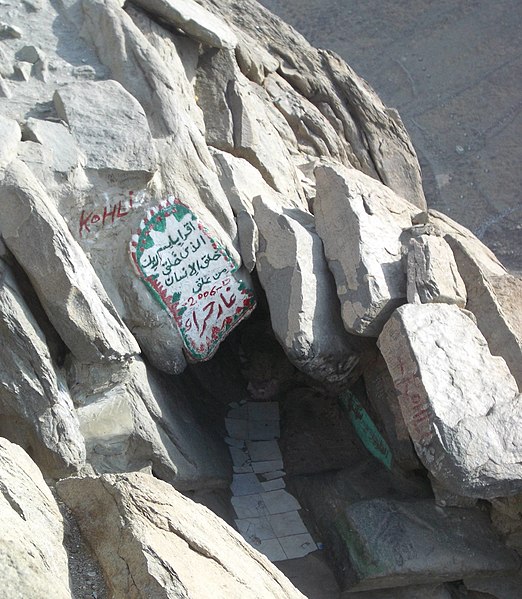
A number of Muslim countries try to overcome some of these difficulties by applying different astronomy-related rules to determine the beginning of months. Thus, Malaysia, Indonesia, and a few others begin each month at sunset on the first day that the moon sets after the sun (moonset after sunset). In Egypt, the month begins at sunset on the first day that the moon sets at least five minutes after the sun. A detailed analysis of the available data shows, however, that there are major discrepancies between what countries say they do on this subject, and what they actually do.[29][30]
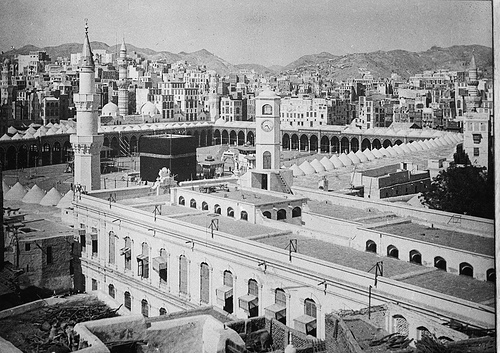
A majority of theologians oppose the use of calculations (beyond the constraint that each month must be not less than 29 nor more than 30 days) on the grounds that the latter would not conform with Muhammad's recommendation to observe the new moon of Ramadan and Shawal in order to determine the beginning of these months.[32][33][34]

However, some jurists see no contradiction between Muhammad's teachings and the use of calculations to determine the beginnings of lunar months.[35] They consider that Muhammad's recommendation was adapted to the culture of the times, and should not be confused with the acts of worship.[36][37][38]

Thus, jurists Ahmad Muhammad Shakir and Yusuf al-Qaradawi both endorsed the use of calculations to determine the beginning of all months of the Islamic calendar, in 1939 and 2004 respectively.[39][40][41] So did the "Fiqh Council of North America" (FCNA) in 2006[42][43] and the "European Council for Fatwa and Research" (ECFR) in 2007.[44][45]

The major Muslim associations of France also announced in 2012 that they would henceforth use a calendar based on astronomical calculations, taking into account the criteria of the possibility of crescent sighting in any place on Earth.[46]
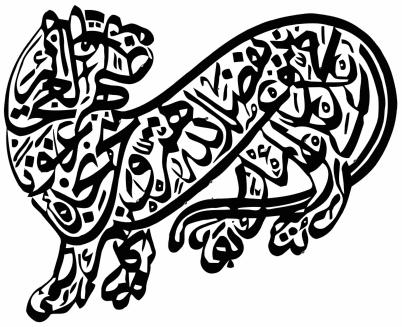
Turkish Muslims also use an Islamic calendar which is calculated several years in advance (currently up to 1437 AH/2015 CE) by the Turkish Presidency of Religious Affairs (Diyanet Isleri Baskanligi).[47] Since 1 Muharrem 1400 AH (21 November 1979) the computed Turkish lunar calendar is based on the following rule: “The lunar month is assumed to begin on the evening when, within some region of the terrestrial globe, the computed centre of the lunar crescent at local sunset is more than 5° above the local horizon and (geocentrically) more than 8° from the Sun.”[48]
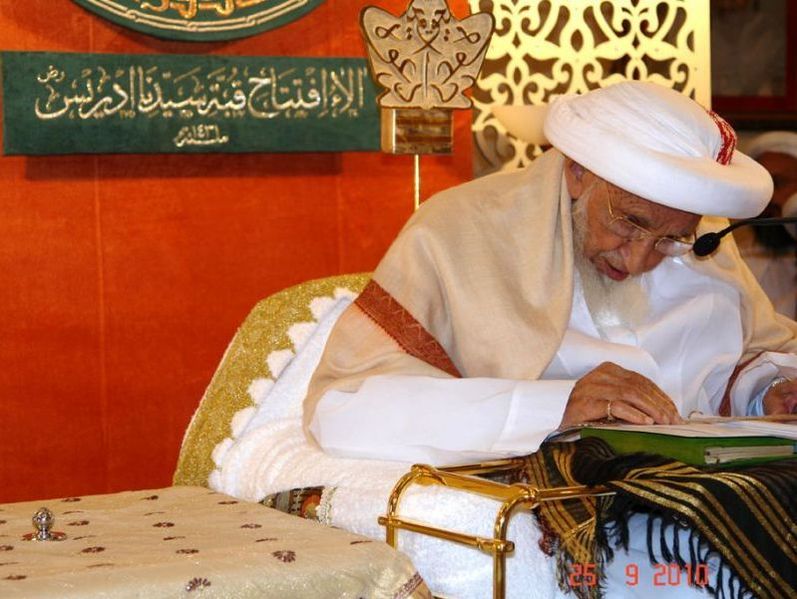
Fatimid Dawoodi Bohra follow the tabular Islamic calendar (see section below) prepared on the basis of astronomical calculations from the days of Fatimid imams.
The country also uses the Umm al-Qura calendar, based on astronomical calculations, but this is restricted to administrative purposes. The parameters used in the establishment of this calendar underwent significant changes over the past decade.[49][50]

Before AH 1420 (before 18 April 1999), if the moon's age at sunset in Riyadh was at least 12 hours, then the day ending at that sunset was the first day of the month. This often caused the Saudis to celebrate holy days one or even two days before other predominantly Muslim countries, including the dates for the Hajj, which can only be dated using Saudi dates because it is performed in Mecca.
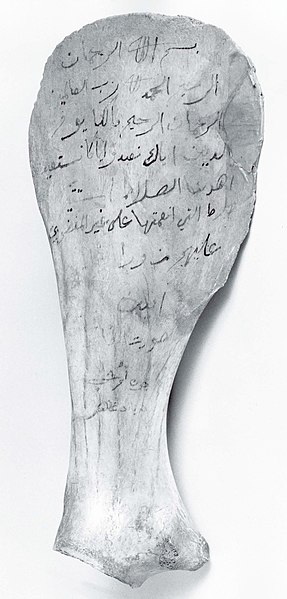
For AH 1420–22, if moonset occurred after sunset at Mecca, then the day beginning at that sunset was the first day of a Saudi month, essentially the same rule used by Malaysia, Indonesia, and others (except for the location from which the hilal was observed).
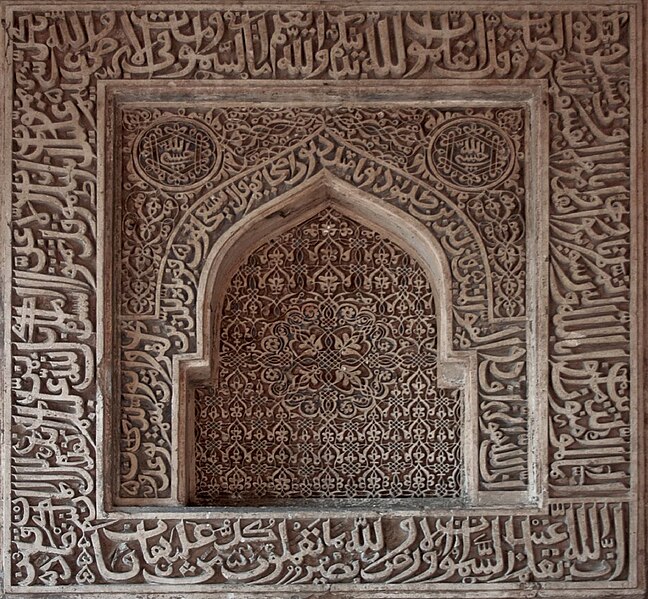
Since the beginning of AH 1423 (16 March 2002), the rule has been clarified a little by requiring the geocentric conjunction of the sun and moon to occur before sunset, in addition to requiring moonset to occur after sunset at Mecca. This ensures that the moon has moved past the sun by sunset, even though the sky may still be too bright immediately before moonset to actually see the crescent.

In 2007, the Islamic Society of North America, the Fiqh Council of North America and the European Council for Fatwa and Research announced that they will henceforth use a calendar based on calculations, using the same parameters as the Umm al-Qura calendar, to determine (well in advance) the beginning of all lunar months (and therefore the days associated with all religious observances). This was intended as a first step on the way to unify Muslims' calendars throughout the world, in some future time.[51][52]
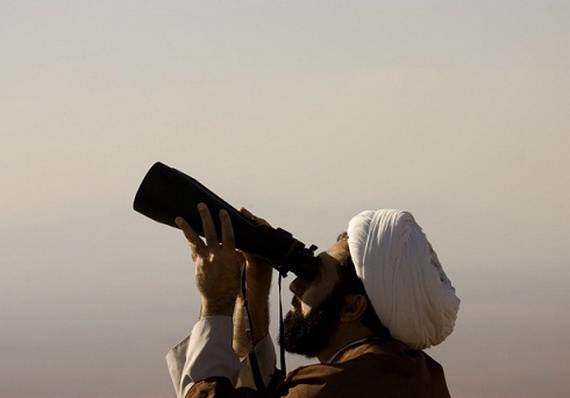
This table may be extended since every nineteen years the Muslim month number increases by seven. When it goes above twelve, subtract twelve and add one to the year AH. From AD412 to AD632 inclusive the month number is 1 and the calculation gives the month correct to a month or so. AD622 corresponds to BH1 and AH1. For earlier years, year BH = (623 or 622) – year AD).

An example calculation: What is the civil date and year AH of the first day of the first month in the year AD20875?

We first find the Muslim month number corresponding to the first month of the Jewish year which begins in AD20874. Dividing 20874 by 19 gives quotient 1098 and remainder 12. Dividing 2026 by 19 gives quotient 106 and remainder 12. The two years are therefore (1098–106)=992x19 years apart. The Muslim month number corresponding to the first Jewish month is therefore (992x7)=6944 higher than in 2026. To convert into years and months divide by twelve – 6944/12=578 years and 8 months. Adding, we get 1447y 10m + 20874y – 2026y + 578y 8m = 20874y 6m. Therefore, the first month of the Jewish year beginning in AD20874 corresponds to the sixth month of the Muslim year AH20874. The worked example in Hebrew calendar#Conversion between Jewish and civil dates shows that the civil date of the first day of this month (ignoring the displacements) is Friday, 14 June. The year AH20875 will therefore begin seven months later, on the first day of the eighth Jewish month, which the worked example shows to be 7 January, AD20875 (again ignoring the displacements). The date given by this method, being calculated, may differ by a day from the actual date, which is determined by observation.

A reading of the section which follows will show that the year AH20875 is wholly contained within the year AD20875, also that in the Gregorian calendar this correspondence will occur one year earlier. The reason for the discrepancy is that the Gregorian year (like the Julian) is slightly too long, so the Gregorian date for a given AH date will be earlier and the Muslim calendar catches up sooner.
Because a hijri or Islamic lunar year is between 10 and 12 days shorter than a civil year, it begins 10–12 days earlier in the civil year following the civil year in which the previous hijri year began. Once every 33 or 34 hijri years, or once every 32 or 33 civil years, the beginning of a hijri year (1 Muharram) coincides with one of the first ten days of January. Subsequent hijri New Years move backward through the civil year back to the beginning of January again, passing through each civil month from December to January.
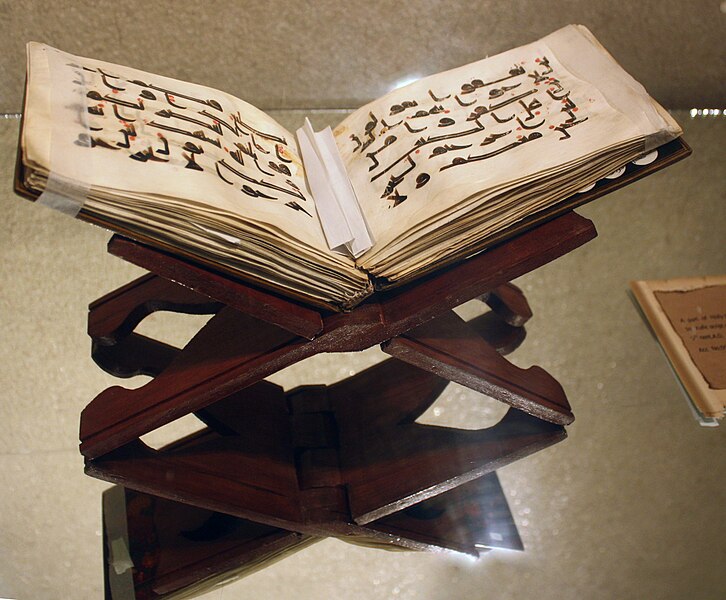
British author Nicholas Hagger writes that after seizing control of Libya, Muammar Gaddafi "declared" on 1 December 1978 "that the Muslim calendar should start with the death of the prophet Mohammed in 632 rather than the hijra (Mohammed's 'emigration' from Mecca to Medina) in 622". This put the country ten solar years behind the standard Muslim calendar.[55] However, according to the Encyclopedia of the Developing World in 2006, "More confusing still is Qaddafi's unique Libyan calendar, which counts the years from the Prophet's birth, or sometimes from his death. The months July and August, named after Julius and Augustus Caesar, are now Nasser and Hannibal respectively."[56] Reflecting on a 2001 visit to the country, American reporter Neil MacFarquhar observed, "Life in Libya was so unpredictable that people weren't even sure what year it was. The year of my visit was officially 1369. But just two years earlier Libyans had been living through 1429. No one could quite name for me the day the count changed, especially since both remained in play. ... Event organizers threw up their hands and put the Western year in parentheses somewhere in their announcements."[57]
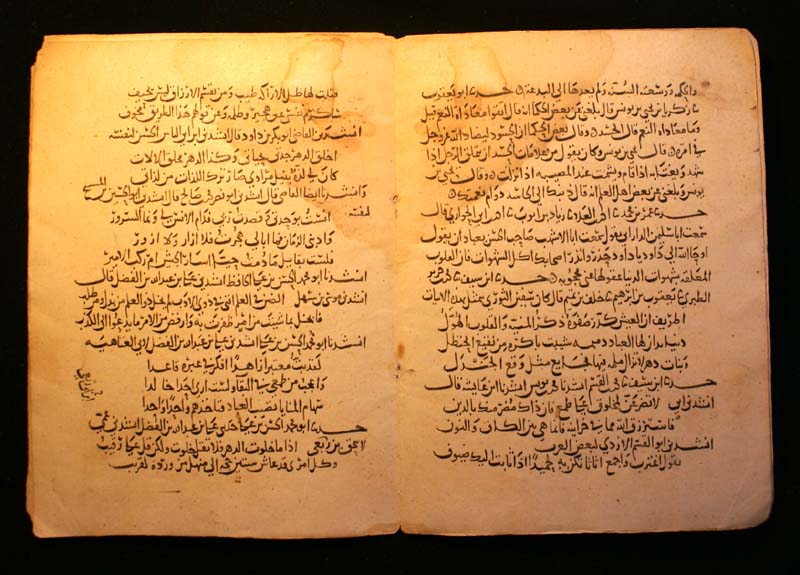
The prohibition of Nasīʾ would presumably have been announced when the intercalated month had returned to its position just before the month of Nasi' began. If Nasīʾ meant intercalation, then the number and the position of the intercalary months between 1 AH and 10 AH are uncertain; Western calendar dates commonly cited for key events in early Islam such as the Hijra, the Battle of Badr, the Battle of Uhud and the Battle of the Trench, should be viewed with caution as they might be in error by one, two or even three lunar months.The number of months with Allah has been twelve months by Allah's ordinance since the day He created the heavens and the earth. Of these four are known as forbidden [to fight in]; That is the straight usage, so do not wrong yourselves therein, and fight those who go astray. But know that Allah is with those who restrain themselves.
Verily the transposing (of a prohibited month) is an addition to Unbelief: The Unbelievers are led to wrong thereby: for they make it lawful one year, and forbidden another year, of months forbidden by Allah and make such forbidden ones lawful. The evil of their course seems pleasing to them. But Allah guideth not those who reject Faith.

This prohibition was mentioned by Muhammad during the farewell sermon which was delivered on 9 Dhu al-Hijja 10 AH (Julian date Friday 6 March, AD 632) on Mount Arafat during the farewell pilgrimage to Mecca.
The three successive forbidden months mentioned by Muhammad (months in which battles are forbidden) are Dhu al-Qi'dah, Dhu al-Hijjah, and Muharram, months 11, 12, and 1. The single forbidden month is Rajab, month 7.Certainly the Nasi' is an impious addition, which has led the infidels into error. One year they authorise the Nasi', another year they forbid it. They observe the divine precept with respect to the number of the sacred months, but in fact they profane that which God has declared to be inviolable, and sanctify that which God has declared to be profane. Assuredly time, in its revolution, has returned to such as it was at the creation of the heavens and the earth. In the eyes of God the number of the months is twelve. Among these twelve months four are sacred, namely, Rajab, which stands alone, and three others which are consecutive.—translated by Sherrard Beaumont Burnaby[19]
Numbering the years
In pre-Islamic Arabia, it was customary to identify a year after a major event which took place in it. Thus, according to Islamic tradition, Abraha, governor of Yemen, then a province of the Christian Kingdom of Aksum (Ethiopia), attempted to destroy the Kaaba with an army which included several elephants. The raid was unsuccessful, but that year became known as the Year of the Elephant, during which Muhammad was born (sura al-Fil). Most equate this to the year AD 570, but a minority use AD 571.
The first ten years of the Hijra were not numbered, but were named after events in the life of Muhammad according to Abū Rayḥān al-Bīrūnī:[20]
- The year of permission.
- The year of the order of fighting.
- The year of the trial.
- The year of congratulation on marriage.
- The year of the earthquake.
- The year of enquiring.
- The year of gaining victory.
- The year of equality.
- The year of exemption.
- The year of farewell.

In AD 638 (17 AH), Abu Musa Ashaari, one of the officials of the Caliph Umar in Basrah, complained about the absence of any years on the correspondence he received from Umar, making it difficult for him to determine which instructions were most recent. This report convinced Umar of the need to introduce an era for Muslims. After debating the issue with his counsellors, he decided that the first year should include the date of Muhammad's arrival at Medina (known as Yathrib, before Muhammad's arrival). Uthman ibn Affan then suggested that the months begin with Muharram, in line with the established custom of the Arabs at that time.[21] The years of the Islamic calendar thus began with the month of Muharram in the year of Muhammad's arrival at the city of Medina, even though the actual emigration took place in Safar and Rabi' I.[3] Because of the Hijra, the calendar was named the Hijra calendar.

The first day of the first month of the Islamic calendar (1 Muharram 1 AH) was Friday, 16 July AD 622, the equivalent civil tabular date (same daylight period) in the Julian calendar.[22][23] The Islamic day began at the preceding sunset on the evening of 15 July. This Julian date (16 July) was determined by medieval Muslim astronomers by projecting back in time their own tabular Islamic calendar, which had alternating 30- and 29-day months in each lunar year plus eleven leap days every 30 years. For example, al-Biruni mentioned this Julian date in the year AD 1000.[24] Although not used by either medieval Muslim astronomers or modern scholars to determine the Islamic epoch, the thin crescent moon would have also first become visible (assuming clouds did not obscure it) shortly after the preceding sunset on the evening of 15 July, 1.5 days after the associated dark moon (astronomical new moon) on the morning of 14 July.[25]

Though Cook and Crone in Hagarism: The Making of the Islamic World cite a coin from 17 AH, the first surviving attested use of a Hijri calendar date alongside a date in another calendar (Coptic) is on a papyrus from Egypt in 22 AH, PERF 558.
Astronomical considerations

The Islamic calendar is not to be confused with a lunar calendar that is based on astronomical calculations. The latter is based on a year of 12 months adding up to 354.37 days. Each lunar month begins at the time of the monthly "conjunction", when the Moon is located on a straight line between the Earth and the Sun. The month is defined as the average duration of a rotation of the Moon around the Earth (29.53 days). By convention, months of 30 days and 29 days succeed each other, adding up over two successive months to 59 full days. This leaves only a small monthly variation of 44 minutes to account for, which adds up to a total of 24 hours (i.e. the equivalent of one full day) in 2.73 years. To settle accounts, it is sufficient to add one day every three years to the lunar calendar, in the same way that one adds one day to the Gregorian calendar, every four years.[26] The technical details of the adjustment are described in Tabular Islamic calendar.

The Islamic calendar, however, is based on a different set of conventions.[27] Each month has either 29 or 30 days, but usually in no discernible order. Traditionally, the first day of each month is the day (beginning at sunset) of the first sighting of the hilal (crescent moon) shortly after sunset. If the hilal is not observed immediately after the 29th day of a month (either because clouds block its view or because the western sky is still too bright when the moon sets), then the day that begins at that sunset is the 30th. Such a sighting has to be made by one or more trustworthy men testifying before a committee of Muslim leaders. Determining the most likely day that the hilal could be observed was a motivation for Muslim interest in astronomy, which put Islam in the forefront of that science for many centuries.

This traditional practice is still followed in the overwhelming majority of Muslim countries. Each Islamic state proceeds with its own monthly observation of the new moon (or, failing that, awaits the completion of 30 days) before declaring the beginning of a new month on its territory. But, the lunar crescent becomes visible only some 17 hours after the conjunction, and only subject to the existence of a number of favourable conditions relative to weather, time, geographic location, as well as various astronomical parameters.[28]

Given the fact that the moon sets progressively later than the sun as one goes west, with a corresponding increase in its "age" since conjunction, Western Muslim countries may, under favorable conditions, observe the new moon one day earlier than eastern Muslim countries. Due to the interplay of all these factors, the beginning of each month differs from one Muslim country to another, during the 48 h period following the conjunction. The information provided by the calendar in any country does not extend beyond the current month.

A number of Muslim countries try to overcome some of these difficulties by applying different astronomy-related rules to determine the beginning of months. Thus, Malaysia, Indonesia, and a few others begin each month at sunset on the first day that the moon sets after the sun (moonset after sunset). In Egypt, the month begins at sunset on the first day that the moon sets at least five minutes after the sun. A detailed analysis of the available data shows, however, that there are major discrepancies between what countries say they do on this subject, and what they actually do.[29][30]
Theological considerations
If the Islamic calendar were prepared using astronomical calculations, Muslims throughout the Muslim world could use it to meet all their needs, the way they use the Gregorian calendar today. But, there are divergent views on whether it is licit to do so.[31]
A majority of theologians oppose the use of calculations (beyond the constraint that each month must be not less than 29 nor more than 30 days) on the grounds that the latter would not conform with Muhammad's recommendation to observe the new moon of Ramadan and Shawal in order to determine the beginning of these months.[32][33][34]

However, some jurists see no contradiction between Muhammad's teachings and the use of calculations to determine the beginnings of lunar months.[35] They consider that Muhammad's recommendation was adapted to the culture of the times, and should not be confused with the acts of worship.[36][37][38]

Thus, jurists Ahmad Muhammad Shakir and Yusuf al-Qaradawi both endorsed the use of calculations to determine the beginning of all months of the Islamic calendar, in 1939 and 2004 respectively.[39][40][41] So did the "Fiqh Council of North America" (FCNA) in 2006[42][43] and the "European Council for Fatwa and Research" (ECFR) in 2007.[44][45]

The major Muslim associations of France also announced in 2012 that they would henceforth use a calendar based on astronomical calculations, taking into account the criteria of the possibility of crescent sighting in any place on Earth.[46]

Turkish Muslims also use an Islamic calendar which is calculated several years in advance (currently up to 1437 AH/2015 CE) by the Turkish Presidency of Religious Affairs (Diyanet Isleri Baskanligi).[47] Since 1 Muharrem 1400 AH (21 November 1979) the computed Turkish lunar calendar is based on the following rule: “The lunar month is assumed to begin on the evening when, within some region of the terrestrial globe, the computed centre of the lunar crescent at local sunset is more than 5° above the local horizon and (geocentrically) more than 8° from the Sun.”[48]

Fatimid Dawoodi Bohra follow the tabular Islamic calendar (see section below) prepared on the basis of astronomical calculations from the days of Fatimid imams.
Saudi Arabia's Umm al-Qura calendar
Saudi Arabia uses the sighting method to determine the beginning of each month of the Hijri calendar. Since AH 1419 (1998/99) several official hilal sighting committees have been set up by the government to determine the first visual sighting of the lunar crescent at the beginning of each lunar month. Nevertheless, the religious authorities also allow the testimony of less experienced observers and thus often announce the sighting of the lunar crescent on a date when none of the official committees could see it.The country also uses the Umm al-Qura calendar, based on astronomical calculations, but this is restricted to administrative purposes. The parameters used in the establishment of this calendar underwent significant changes over the past decade.[49][50]

Before AH 1420 (before 18 April 1999), if the moon's age at sunset in Riyadh was at least 12 hours, then the day ending at that sunset was the first day of the month. This often caused the Saudis to celebrate holy days one or even two days before other predominantly Muslim countries, including the dates for the Hajj, which can only be dated using Saudi dates because it is performed in Mecca.

For AH 1420–22, if moonset occurred after sunset at Mecca, then the day beginning at that sunset was the first day of a Saudi month, essentially the same rule used by Malaysia, Indonesia, and others (except for the location from which the hilal was observed).

Since the beginning of AH 1423 (16 March 2002), the rule has been clarified a little by requiring the geocentric conjunction of the sun and moon to occur before sunset, in addition to requiring moonset to occur after sunset at Mecca. This ensures that the moon has moved past the sun by sunset, even though the sky may still be too bright immediately before moonset to actually see the crescent.
In 2007, the Islamic Society of North America, the Fiqh Council of North America and the European Council for Fatwa and Research announced that they will henceforth use a calendar based on calculations, using the same parameters as the Umm al-Qura calendar, to determine (well in advance) the beginning of all lunar months (and therefore the days associated with all religious observances). This was intended as a first step on the way to unify Muslims' calendars throughout the world, in some future time.[51][52]
Convert Hijri to civil date or civil to Hijri date
Conversions may be done online (see list of programmes at the bottom of this page), using the Tabular Islamic calendar (see section above) or, most accurately, through the Jewish calendar, which is accurate to one day in 15,186 years. Theoretically, the days of the months correspond in both calendars if the displacements which are a feature of the Jewish system are ignored. The table below gives, for nineteen years, the Muslim month which corresponds to the first Jewish month.| Year AD | Year AH | Muslim month | Year AD | Year AH | Muslim month |
|---|---|---|---|---|---|
| 1964 | 1383 | 5 | 2021 | 1442 | 8 |
| 2012 | 1433 | 5 | 2022 | 1443 | 9 |
| 2013 | 1434 | 5 | 2023 | 1444 | 9 |
| 2014 | 1435 | 6 | 2024 | 1445 | 10 |
| 2015 | 1436 | 6 | 2025 | 1446 | 10 |
| 2016 | 1437 | 7 | 2026 | 1447 | 10 |
| 2017 | 1438 | 7 | 2027 | 1448 | 11 |
| 2018 | 1439 | 7 | 2028 | 1449 | 11 |
| 2019 | 1440 | 8 | 2029 | 1450 | 11 |
| 2020 | 1441 | 8 |

This table may be extended since every nineteen years the Muslim month number increases by seven. When it goes above twelve, subtract twelve and add one to the year AH. From AD412 to AD632 inclusive the month number is 1 and the calculation gives the month correct to a month or so. AD622 corresponds to BH1 and AH1. For earlier years, year BH = (623 or 622) – year AD).

An example calculation: What is the civil date and year AH of the first day of the first month in the year AD20875?

We first find the Muslim month number corresponding to the first month of the Jewish year which begins in AD20874. Dividing 20874 by 19 gives quotient 1098 and remainder 12. Dividing 2026 by 19 gives quotient 106 and remainder 12. The two years are therefore (1098–106)=992x19 years apart. The Muslim month number corresponding to the first Jewish month is therefore (992x7)=6944 higher than in 2026. To convert into years and months divide by twelve – 6944/12=578 years and 8 months. Adding, we get 1447y 10m + 20874y – 2026y + 578y 8m = 20874y 6m. Therefore, the first month of the Jewish year beginning in AD20874 corresponds to the sixth month of the Muslim year AH20874. The worked example in Hebrew calendar#Conversion between Jewish and civil dates shows that the civil date of the first day of this month (ignoring the displacements) is Friday, 14 June. The year AH20875 will therefore begin seven months later, on the first day of the eighth Jewish month, which the worked example shows to be 7 January, AD20875 (again ignoring the displacements). The date given by this method, being calculated, may differ by a day from the actual date, which is determined by observation.
A reading of the section which follows will show that the year AH20875 is wholly contained within the year AD20875, also that in the Gregorian calendar this correspondence will occur one year earlier. The reason for the discrepancy is that the Gregorian year (like the Julian) is slightly too long, so the Gregorian date for a given AH date will be earlier and the Muslim calendar catches up sooner.
Current correlations
An Islamic year will be entirely within a Gregorian year of the same number in the year 20874, after which year the number of the Islamic year will always be greater than the number of the concurrent civil year. The Islamic calendar year of 1429 occurred entirely within the civil calendar year of 2008. Such years occur once every 33 or 34 Islamic years (32 or 33 civil years). More are listed here:
| Islamic year within civil year | ||
| Islamic | Civil | Difference |
| 1060 | 1650 | 590 |
| 1093 | 1682 | 589 |
| 1127 | 1715 | 588 |
| 1161 | 1748 | 587 |
| 1194 | 1780 | 586 |
| 1228 | 1813 | 585 |
| 1261 | 1845 | 584 |
| 1295 | 1878 | 583 |
| 1329 | 1911 | 582 |
| 1362 | 1943 | 581 |
| 1396 | 1976 | 580 |
| 1404 | 1985 | 579 |
| 1429 | 2008 | 579 |
| 1463 | 2041 | 578 |
| 1496 | 2073 | 577 |
| 1530 | 2106 | 576 |
| 1564 | 2139 | 575 |
Because a hijri or Islamic lunar year is between 10 and 12 days shorter than a civil year, it begins 10–12 days earlier in the civil year following the civil year in which the previous hijri year began. Once every 33 or 34 hijri years, or once every 32 or 33 civil years, the beginning of a hijri year (1 Muharram) coincides with one of the first ten days of January. Subsequent hijri New Years move backward through the civil year back to the beginning of January again, passing through each civil month from December to January.
Uses
The Islamic calendar is now used primarily for religious purposes, and for official dating of public events and documents in Muslim countries. Because of its nature as a purely lunar calendar, it cannot be used for agricultural purposes and historically Islamic communities have used other calendars for this purpose: the Egyptian calendar was formerly widespread in Islamic countries, and the Iranian calendar and the 1789 Ottoman calendar (a modified Julian calendar) were also used for agriculture in their countries. In Morocco, the Berber calendar (another Julian calendar) is still used by farmers in the countryside. These local solar calendars have receded in importance with the near-universal adoption of the Gregorian calendar for civil purposes. As noted above, Saudi Arabia uses the Islamic calendar to date religious occasions such as Ramadan, Hajj, etc. and the Umm-al-Qura calendar, based on calculations, for administrative purposes and daily government business.[54] In Indonesia, the Javanese calendar, created by Sultan Agung in 1633, combines elements of the Islamic and pre-Islamic Saka calendars.
British author Nicholas Hagger writes that after seizing control of Libya, Muammar Gaddafi "declared" on 1 December 1978 "that the Muslim calendar should start with the death of the prophet Mohammed in 632 rather than the hijra (Mohammed's 'emigration' from Mecca to Medina) in 622". This put the country ten solar years behind the standard Muslim calendar.[55] However, according to the Encyclopedia of the Developing World in 2006, "More confusing still is Qaddafi's unique Libyan calendar, which counts the years from the Prophet's birth, or sometimes from his death. The months July and August, named after Julius and Augustus Caesar, are now Nasser and Hannibal respectively."[56] Reflecting on a 2001 visit to the country, American reporter Neil MacFarquhar observed, "Life in Libya was so unpredictable that people weren't even sure what year it was. The year of my visit was officially 1369. But just two years earlier Libyans had been living through 1429. No one could quite name for me the day the count changed, especially since both remained in play. ... Event organizers threw up their hands and put the Western year in parentheses somewhere in their announcements."[57]


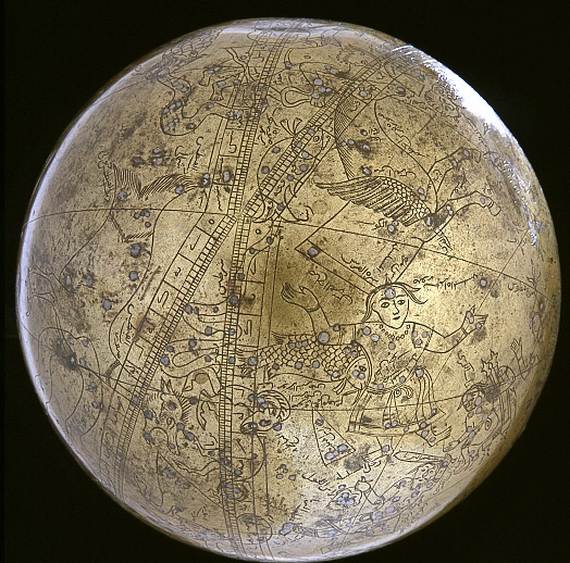
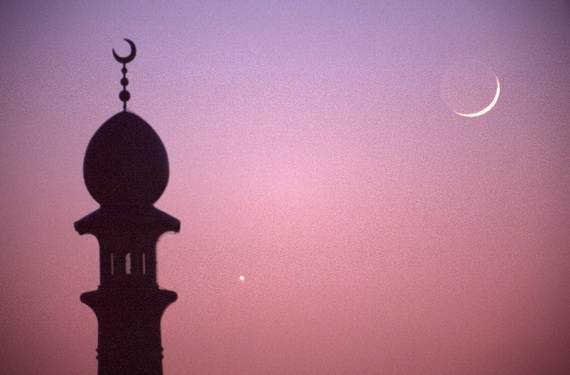
Thank you for this clear and informative article! Be sure to read this article for more insights Reaction Time Test. Reaction time tests are often part of motor skill assessments, especially for hand-eye coordination.
ReplyDelete